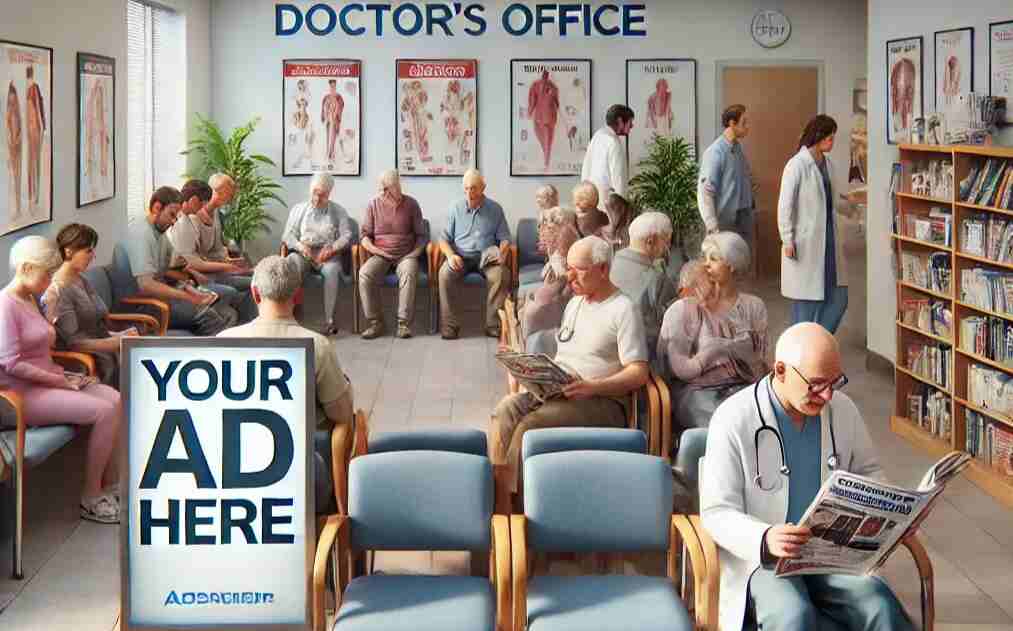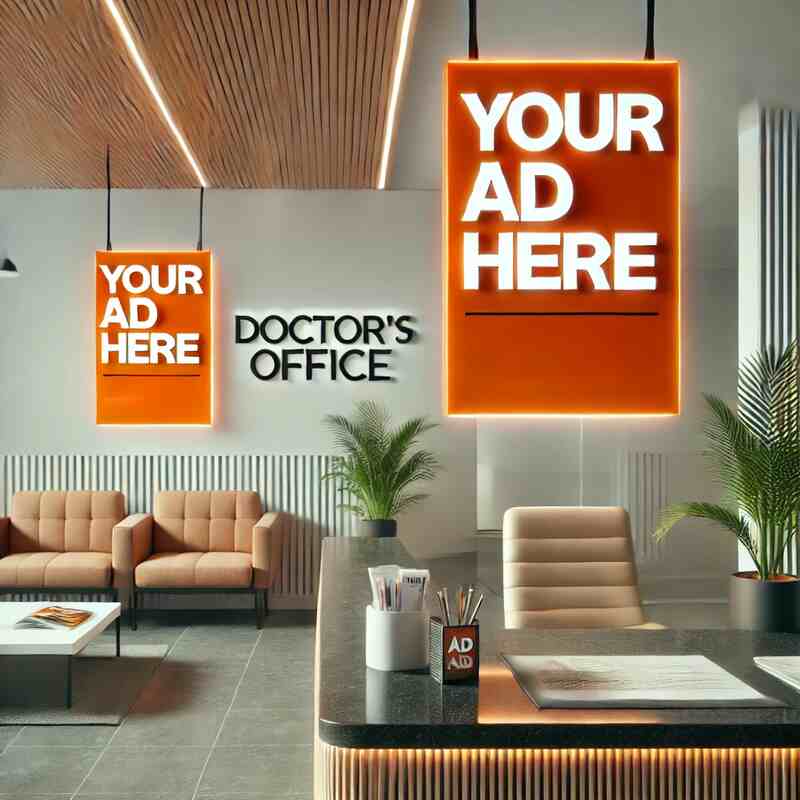Have you ever considered the incredible potential of advertising in healthcare spaces? What if your brand could capture the attention of a highly engaged audience, right in the heart of one of the most trusted environments—doctors’ offices? Welcome to the world of doctor ads, where brands connect with consumers in moments of waiting and attention. Ready to explore how doctor office advertising could work for you? Request our Media Kit today, with no commitment, and discover why doctor ads are a smart, strategic choice for your next campaign.
Introduction to Place-Based Advertising
Place-based advertising is about meeting your audience where they are—in spaces they frequent, trust, and spend time. One of the most effective place-based advertising platforms is in healthcare settings, particularly in doctors’ offices. With an average wait time of 15-30 minutes, patients and their families have ample opportunity to engage with branded content. Whether it’s through wall posters, informative flyers, or take-home pamphlets, doctor ads ensure that your brand message is delivered in an environment where attention is undivided.
Concept of Doctor Ads
Doctor ads offer a unique opportunity to engage with an attentive and highly receptive audience. The key formats include:
Wall Posters: Strategically placed posters in waiting rooms and consultation areas that provide visual engagement for patients while they wait.
Reception Counter Cards: Informational cards or branded content placed at reception areas where patients naturally spend time, ideal for brief yet impactful messaging.
Take-Ones: Pamphlets or brochures that patients can pick up and take home, extending the brand’s reach beyond the office.
These formats allow brands to deliver educational, engaging, and compelling messages that feel relevant and thoughtful to a healthcare audience.
Why Advertising in Doctor’s Offices Makes Sense
Advertising in doctor’s offices offers several benefits that traditional advertising platforms cannot compete with:
Undivided Attention: Patients in waiting rooms are often looking for distractions, which makes them more likely to engage with your brand’s messaging.
Trustworthy Environment: Doctors’ offices are trusted spaces, and brands that advertise in this setting benefit from that credibility.
Extended Exposure: Patients typically spend 15-30 minutes waiting, giving your ad extended exposure time—something that other media formats often lack.
Hyperlocal Targeting: If your brand wants to target a specific demographic or geographic region, doctor ads allow for highly precise placements.
Cost-Effective: Compared to traditional forms of advertising like TV or digital, doctor ads offer a highly cost-effective way to reach an engaged audience.
Use Cases for Doctor Ads
Here are five practical use cases where doctor ads have been proven effective:
Pharmaceutical Brands
Example: A pharmaceutical company promoting a new over-the-counter allergy medication uses wall posters and take-home brochures in allergists’ offices. The ad includes detailed information on the medication’s benefits and a QR code leading to a coupon or discount.
Benefit: The healthcare setting builds trust, and the patient has the time to learn about the product while waiting.
Health Insurance Companies
Example: Health insurance providers use reception counter cards to promote new healthcare plans. The cards encourage patients to explore coverage options via a website or phone number provided.
Benefit: Direct access to a health-conscious audience actively thinking about healthcare needs.
Nutritional Supplements
Example: A nutritional supplement company advertises its line of vitamins and probiotics through wall posters in pediatricians’ offices, targeting parents concerned about their children’s health.
Benefit: Positioned in a context where parents are open to hearing about health-improving products for their children.
Fitness Centers
Example: A local gym promotes its wellness programs through pamphlets placed in doctors’ offices, encouraging patients to take a step towards a healthier lifestyle with a special sign-up offer.
Benefit: Reaching health-conscious individuals at a time when they’re most receptive to fitness-related messaging.
Mental Health Apps
Example: A mental health app uses posters in psychologists’ and general practitioners’ offices to promote self-care and mindfulness, offering a free trial for new users.
Benefit: The healthcare environment enhances the app’s credibility and relevance.







